Hitting a roadblock with your document tool — in this case, Adobe Acrobat — can be a major buzzkill when you're trying to manage your documents.
Adobe Acrobat is a widely-used application for handling PDF files, so the malfunction of this program can lead to a range of complications.
Of the various issues you may run into, the "Adobe Acrobat not responding" error is one of the most frequent and most frustrating.
To prevent this issue from slowing you down, we've compiled 9 effective solutions to fix the "Adobe Acrobat not responding" problem. You can click here to skip to part 2 and solve your issues quickly with the methods introduced.
Part 1. Why is Adobe Acrobat Not Responding?
Dealing with "Adobe Acrobat not responding" or "Adobe Acrobat DC not responding" can be a real pain, especially if you rely on Adobe for most of your PDF needs. There are a number of reasons this annoyance may be occurring, and identifying the culprit is the first step in troubleshooting. These reasons include:
- Outdated Version of Adobe: Running an outdated version of Adobe Acrobat can result in a number of bugs, including missteps that occur from non-responsiveness. Updates to software are meant to fix bugs, improve compatibility, and improve performance. If you skip these updates, your software can lag behind and run into problems.
- Incompatibility with the Operating System: Adobe Acrobat may not be immediately compatible with your operating system, particularly after new operating system updates. Some of these changes can prevent responsiveness. On the other hand, your version of Adobe may not be fully optimized for very old operating systems. So, if you are not updating your operating system, you may need to check how Adobe Acrobat is going to work with your system.
- Conflicting Software: Your operating system might be hosting software or plugins that do not play well with Adobe Acrobat. The presence of security software, other PDF management tools, or any plug-ins that change the way your operating system and your applications interact can cause conflicts. Such conflicts will prevent Adobe Acrobat from opening or working correctly.
- Insufficient System Resources: Adobe Acrobat, especially newer versions like Adobe Acrobat DC, requires a certain level of system resources to operate properly. If your system is low on resources due to many applications that are running at once, it could cause Adobe Acrobat to freeze or stop responding.
- Corrupted Installation: Over time, the installation of Adobe Acrobat itself can become corrupted. This could be due to incomplete updates, system crashes while the application is running, or other software issues that interrupt Adobe Acrobat's files, causing it to not launch properly.
- Corrupted Installation Files: Apart from a corrupted installation, the installation files themselves could be corrupt. This might happen if the download process is interrupted or if the source files have been tampered with, leading to an incomplete or corrupted installation.
- Enabled Protected Mode Settings: Adobe wrote Protected Mode to better handle potentially malicious documents. When enabled (it's disabled by default), protected mode places the graphics rendering, JavaScript, and color management in a sandbox. In some cases, this mode can interfere with the software's functionality, causing it to hang or not respond, especially when dealing with complex PDFs or operating in a restricted system environment.
If Adobe is not responding for you, then your underlying issue is probably one of the above reasons. Addressing this issue usually starts with identifying the specific cause and then applying the appropriate fix, whether it's updating software, adjusting settings, or seeking alternative solutions.
Part 2. How to Fix Adobe Acrobat DC/Pro/Reader Not Responding?
Now that you're aware of the reasons why Adobe Acrabot is not responding, here are nine troubleshooting steps to start you on your way to having a smooth-running Adobe Acrobat again:
Way 1. Use Another Cheaper and Better Alternative
Getting hit with the "Acrobat not responding" issue, especially when you have an urgent deadline, can be a real headache. This is where UPDF shines as a standout alternative. Instead of going through the pain of getting Adobe Acrobat to work, we recommend that you check out UPDF. You can click the button below to see if it is what you need.
Windows • macOS • iOS • Android 100% secure
UPDF isn't just a basic PDF editor — it's an entire suite of tools packed with nearly all of the features found in Acrobat. You get everything from basic PDF editing to AI-enhanced functionalities, PDF annotation, form handling, and more. What really makes UPDF special is its compatibility; this powerful alternative to Acrobat is cross-platform, available on Windows, Mac, Android, and iOS, so you can work with your documents no matter what device you're working on.
While Adobe Acrobat may be the gold standard for professionals, its price makes it prohibitive for most individuals and small businesses. For a single license that covers all of your devices, there's nothing that comes close to UPDF's affordability, making it the perfect choice for individuals or teams. And it has a big discount now. You can check its price here and upgrade to the pro version if you like it after testing.
Here are just some highlights of UPDF's many features:
- AI Assistance: Enhance document analysis and automate tasks with personalized editing suggestions.
- Edit Text & Images: Easily modify text and images within PDFs for full content control.
- Annotate & Comment: Use tools like highlighting and sticky notes for document review.
- OCR Technology: Convert scanned documents into editable and searchable text.
- PDF Conversion: Transform PDFs into various formats, including Word, Excel, and images.
- Organize Pages: Rearrange, delete, or rotate PDF pages to customize documents.
- Secure Documents: Add passwords and encryption to protect sensitive information.
- Sign & Fill Forms: Electronically sign documents and fill out forms within UPDF.
- Cloud Integration: Access and store PDFs in the cloud for easy retrieval across devices.
Interested in exploring UPDF further? For an in-depth review of all of UPDF's features and demonstration of its capabilities, read this article on HowToGeek.
Then watch this comprehensive video tutorial to see why UPDF is the best Adobe Acrobat Alternative. With all that UPDF has to offer, you'll know if it's a valuable tool for you in no time.
Ready to enhance your PDF management experience? Click the button below to download UPDF today and discover a smarter way to work with PDFs across all your devices.
Windows • macOS • iOS • Android 100% secure
Way 2. Clear Recent File List
Clearing recent files in Adobe Acrobat may help resolve non-responding issues by decreasing initial load time (it doesn't have to read and preview those files), removing corrupted file references that might take ages (even software at the level of Acrobat gets corruption, though it's not very common), and resetting the application's state closer to default in order to avoid bugs due directly to file or content. Here's how to do it:
Step 1: Go to your recent files.
There are 2 ways to access your recent files. You can navigate there directly by clicking on "Recent" on the left-column toolbar. Alternatively, you can get there by going through File, Open Recent Files, and selecting View All Recent Files for a list of all your recent documents.
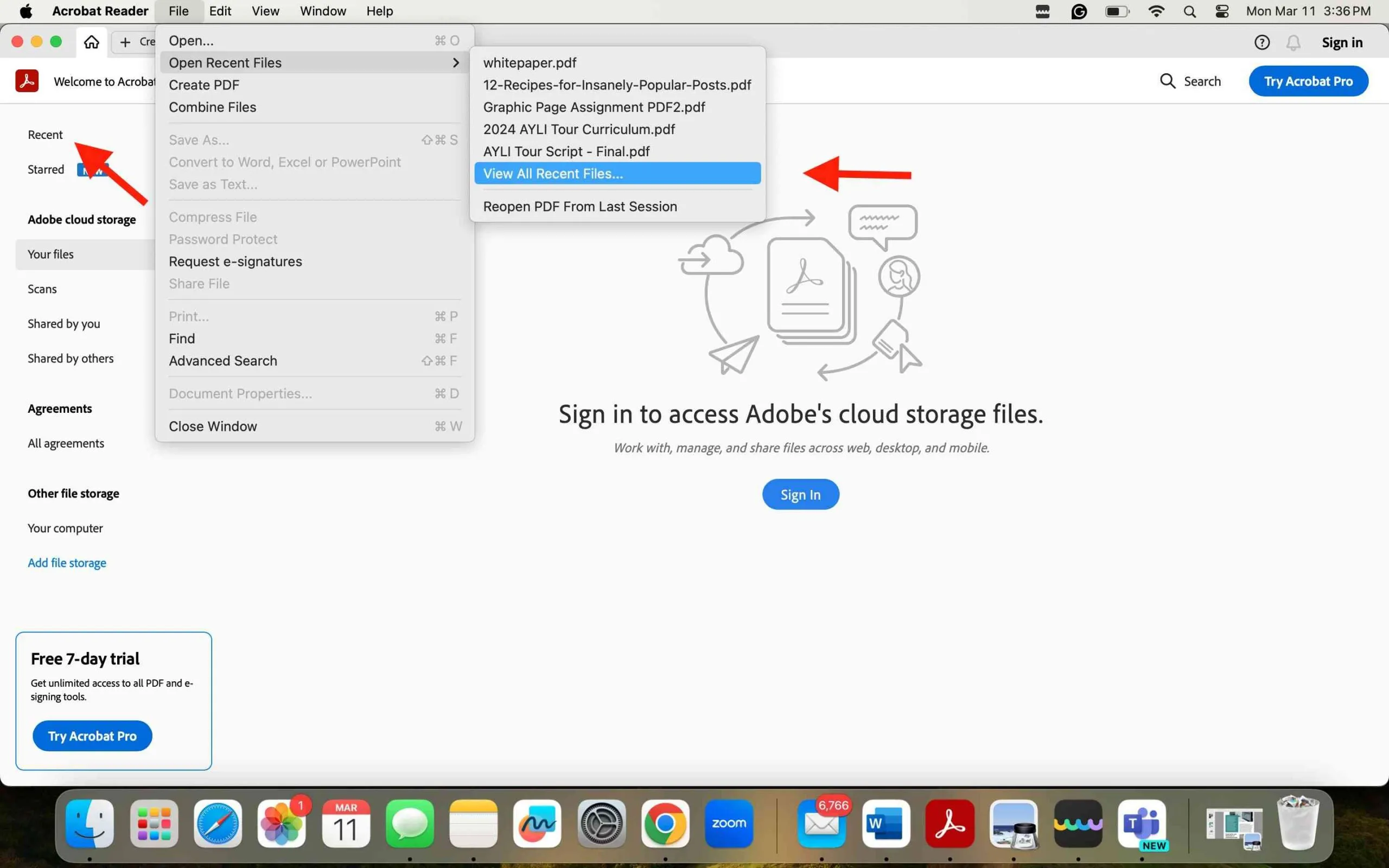
Step 2: Selecting files.
In the recent files view, you'll notice a checkbox at the top of the list. Use this to select all recent files simultaneously, preparing them for any bulk action you are going to take.
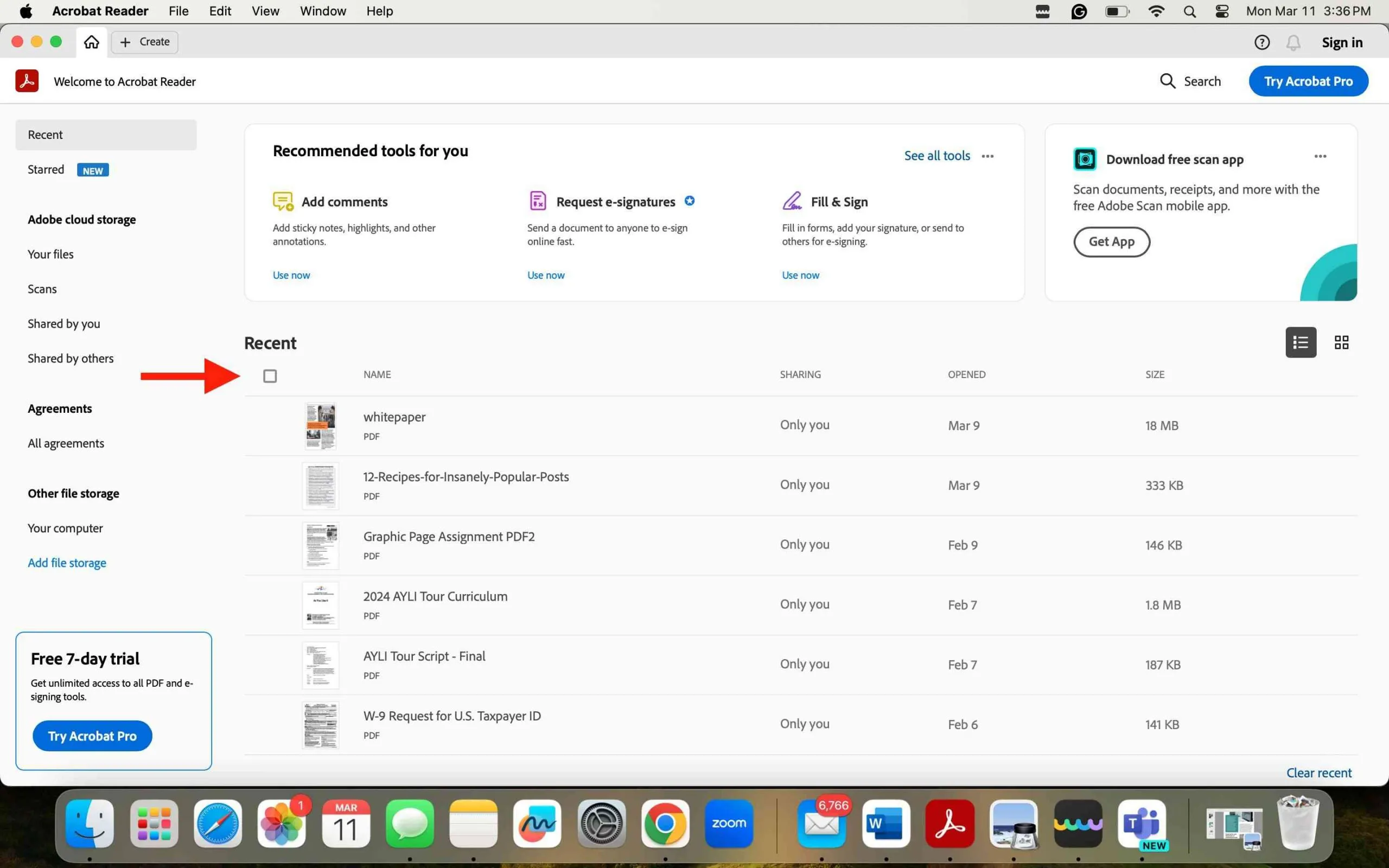
Step 3: Remove all recent files.
Look for the "Remove from Recent" option on the right side of the application and click on it. Documents will disappear from this list when you click this option, but you will be able to access all of the removed files from their original document locations.
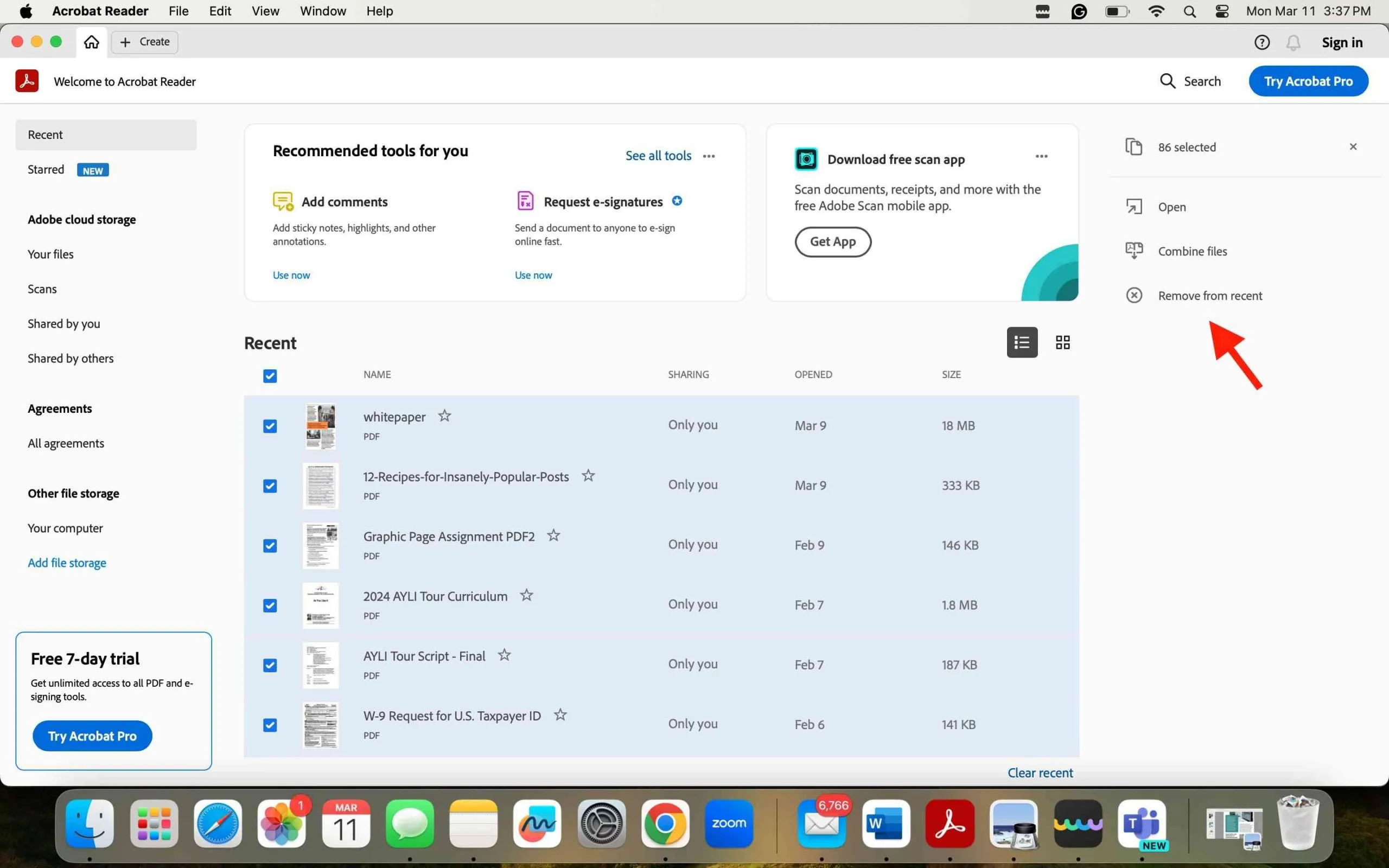
Way 3. Restart Adobe Acrobat and Computer
"Acrobat not responding" can be resolved sometimes by restarting Adobe Acrobat. The restart can refresh the software, free up system resources, reset the software environment, apply pending updates or fixes, and help diagnose persistent issues. It can be athe first simple yet effective step in troubleshooting that can resolve minor issues and improve software performance. Try this:
Step 1: Close Adobe Acrobat.
If the program is open but not responding, you might need to force close it. On Windows, you can do this by opening the Task Manager (Ctrl+Shift+Esc), finding Adobe Acrobat in the list of running applications, selecting it, and clicking "End Task". On a Mac, press Option+Command+Esc to open the Force Quit Applications dialog, select Adobe Acrobat, and click "Force Quit". Below is a screenshot of the Force Quit Application on Mac:
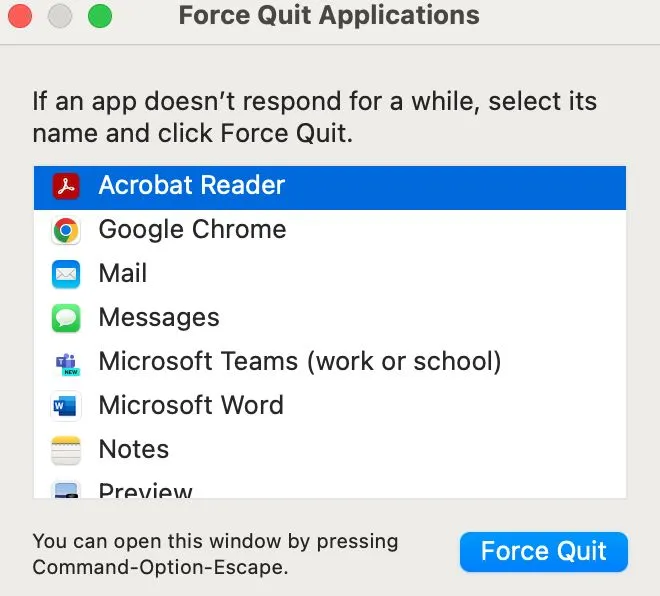
Step 2: Restart your computer.
First, make sure all your work is saved before restarting to avoid losing unsaved data. To restart a Windows computer, click the Start menu, select the Power icon, and choose "Restart". On a Mac, click the Apple menu and select "Restart".
Step 3: Reopen Adobe Acrobat.
After ensuring Adobe Acrobat is completely closed, you can reopen it by clicking on its icon in your Applications folder (Mac) or Start menu (Windows). Below is a screenshot of Adobe Acrobat in the Applications folder in Mac.
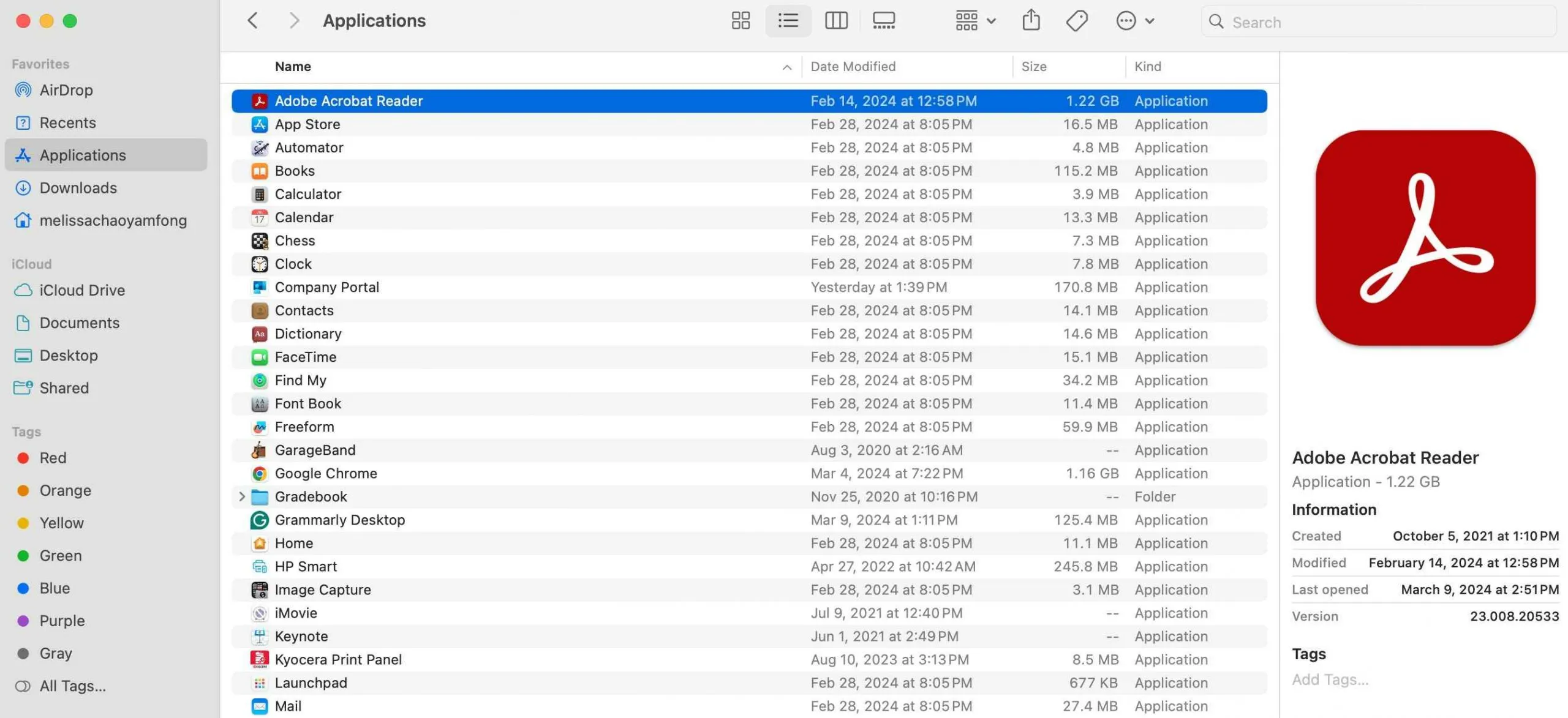
If closing and reopening Adobe Acrobat does not solve the issue, then try out some of the next troubleshoot options.
Way 4. Update Adobe Acrobat
If the "Adobe Acrobat not responding" issue still persists, try updating Adobe Acrobat. This guide uses a Mac for demonstration, but the process for updating on Windows is should be quite similar.
Step 1: Check for updates.
In Adobe Acrobat, look for the "Help" option in the menu bar at the top of the screen and click on it. From the drop-down menu under "Help", choose "Check for Updates".
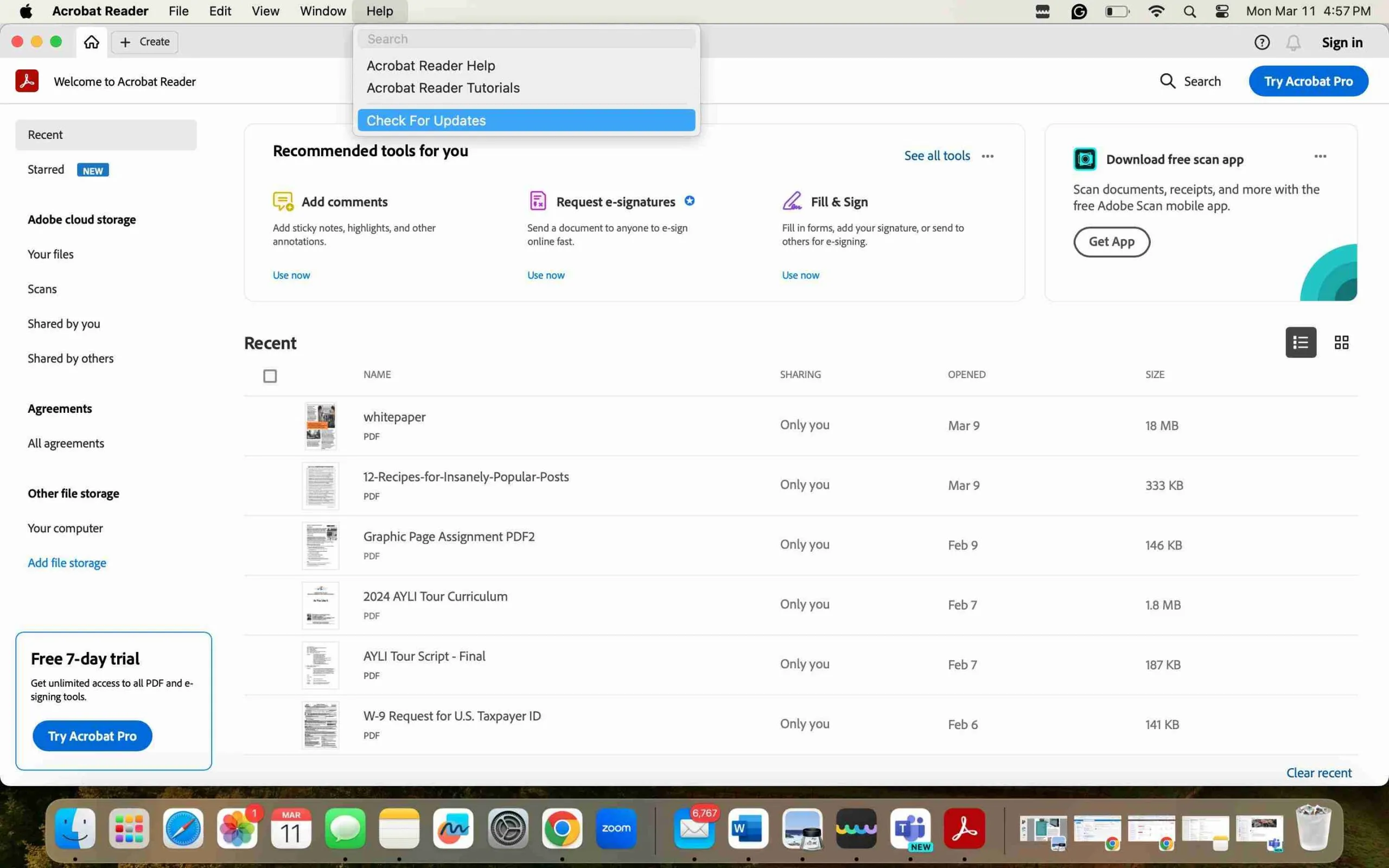
Step 2: Install updates.
If updates are available, a window will open showing the available updates. Click "Update" or "Install" to start updating. Follow the prompts to complete the installation. If not updates are available, then try another troubleshoot method.
Step 3: Restart Adobe Acrobat.
After updating, restart Adobe Acrobat to ensure all new updates are correctly implemented.
Way 5. Reinstall Adobe Acrobat
Reinstalling Adobe Acrobat will not only refresh the program with the newest updates, but doing so may also repair any corrupted files. If the Adobe settings are causing problems, you need to give the program a full reset. Once again, we'll go through the steps of reinstalling Adobe Acrobat using a Mac, but the steps should be very similar for Windows.
Step 1: Uninstall Adobe Acrobat.
Open the Finder and navigate to the "Applications" folder. Locate Adobe Acrobat and drag it to the Trash, or right-click (or Control-click) on it and select "Move to Trash".
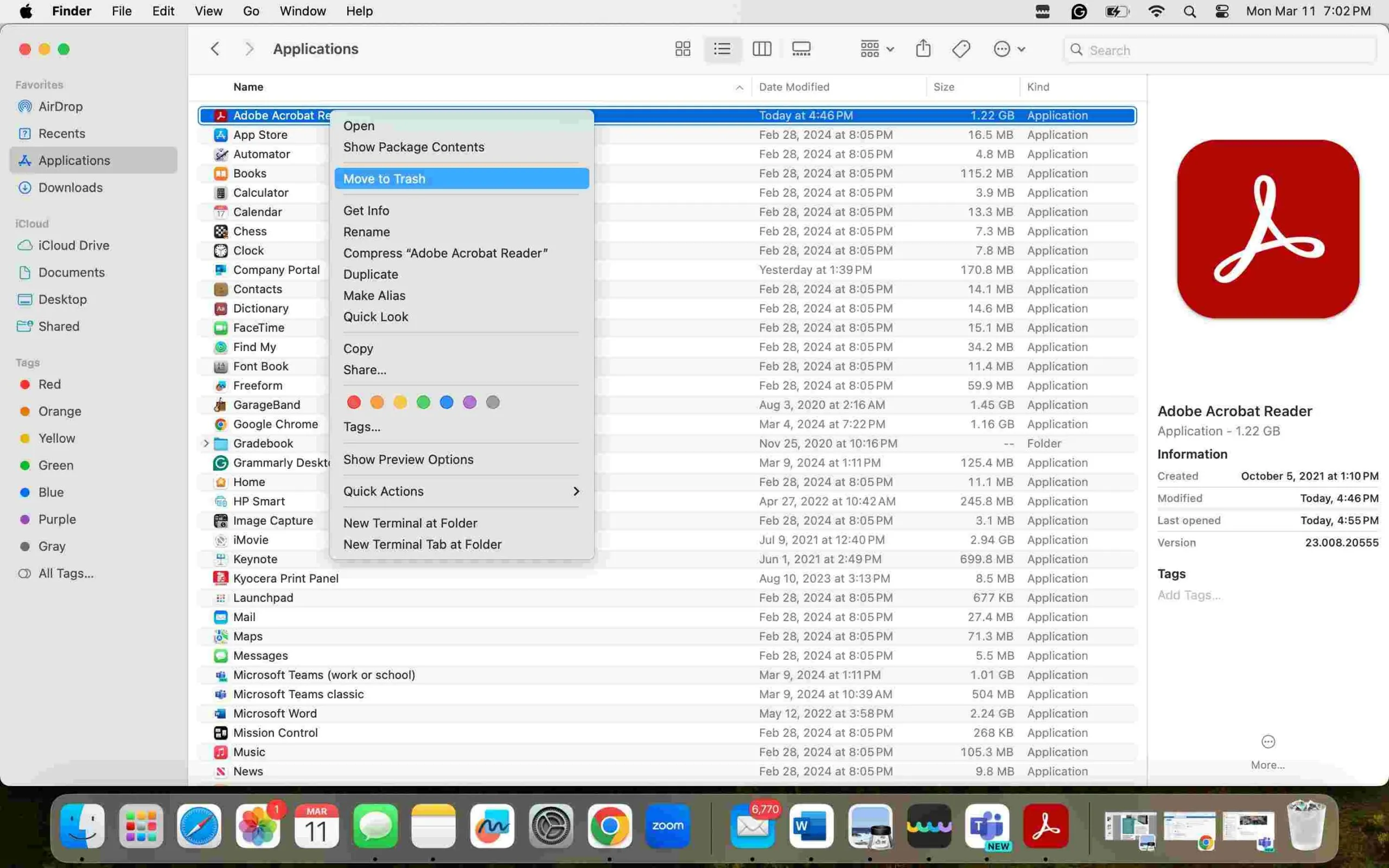
Step 2: Empty the Trash.
Right-click on the Trash icon in your Dock and select "Empty Trash" to permanently delete the files.
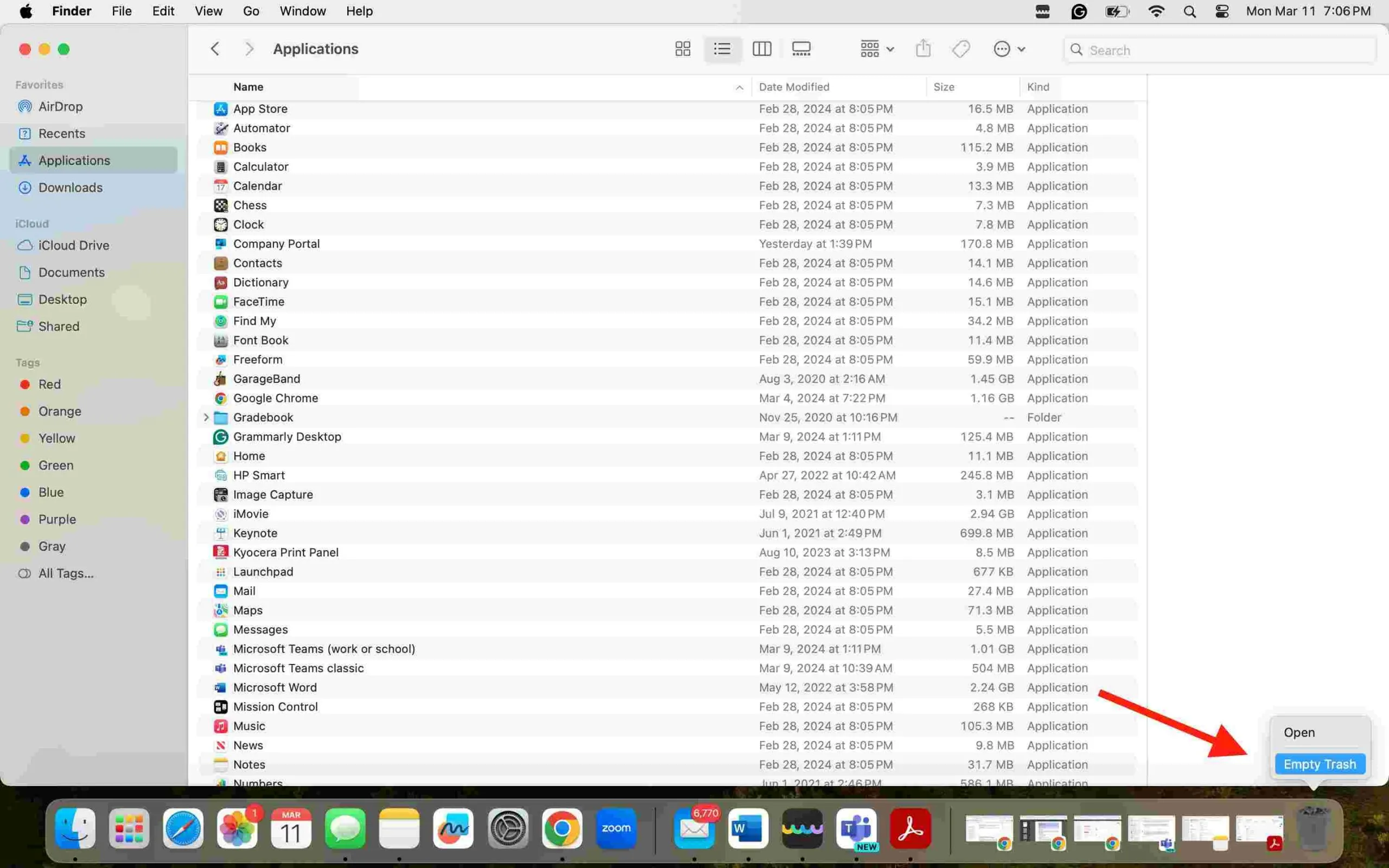
Step 3: Download the latest version of Adobe Acrobat.
Visit the official Adobe Acrobat download page: Adobe Acrobat Download. Click on the "Download" or "Free Trial" button to download the installer.
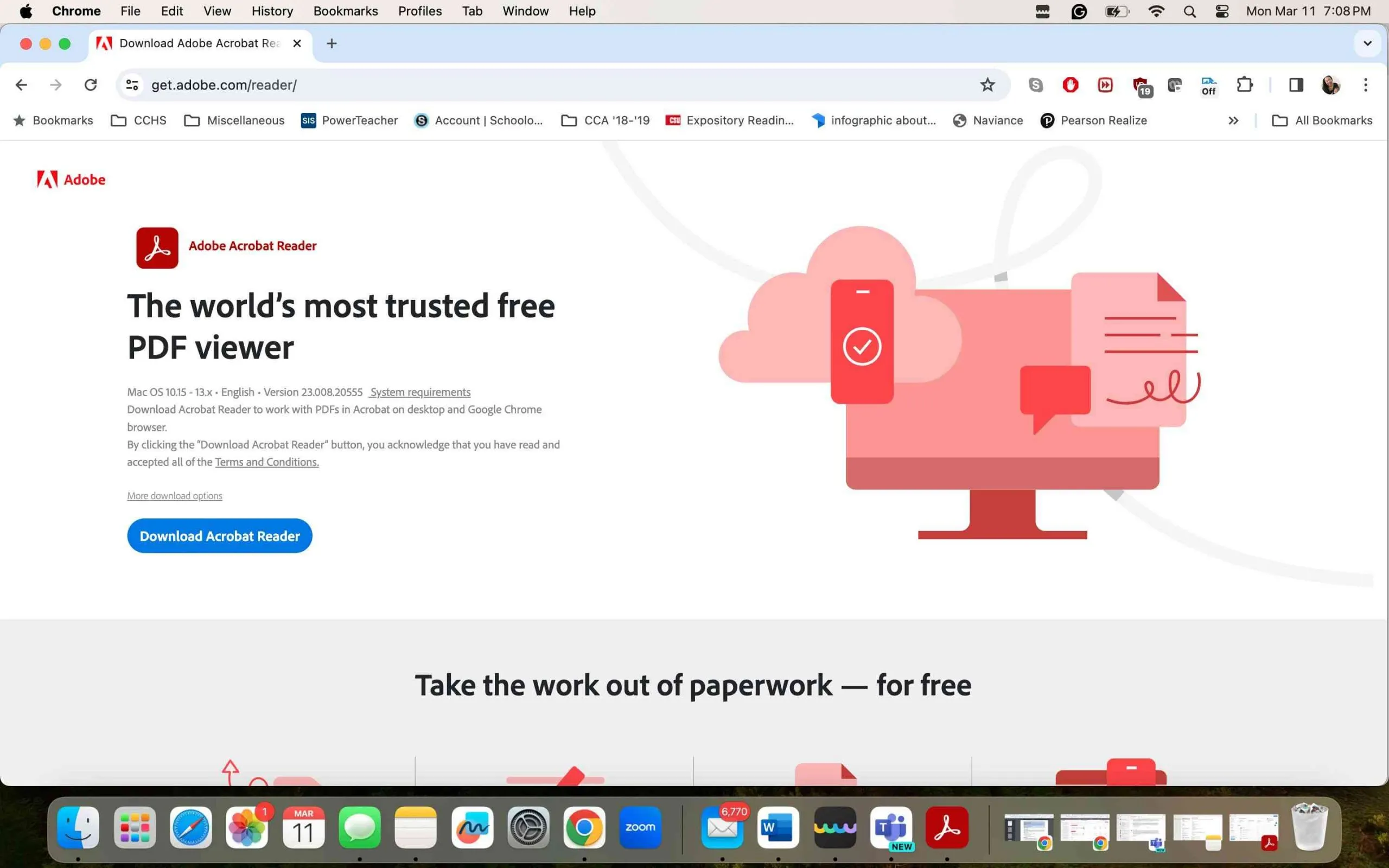
Step 4: Install Adobe Acrobat.
Once the download is complete, open the downloaded file (usually in your Downloads folder).
Follow the on-screen instructions to install Adobe Acrobat on your Mac. You may need to sign in with your Adobe ID.
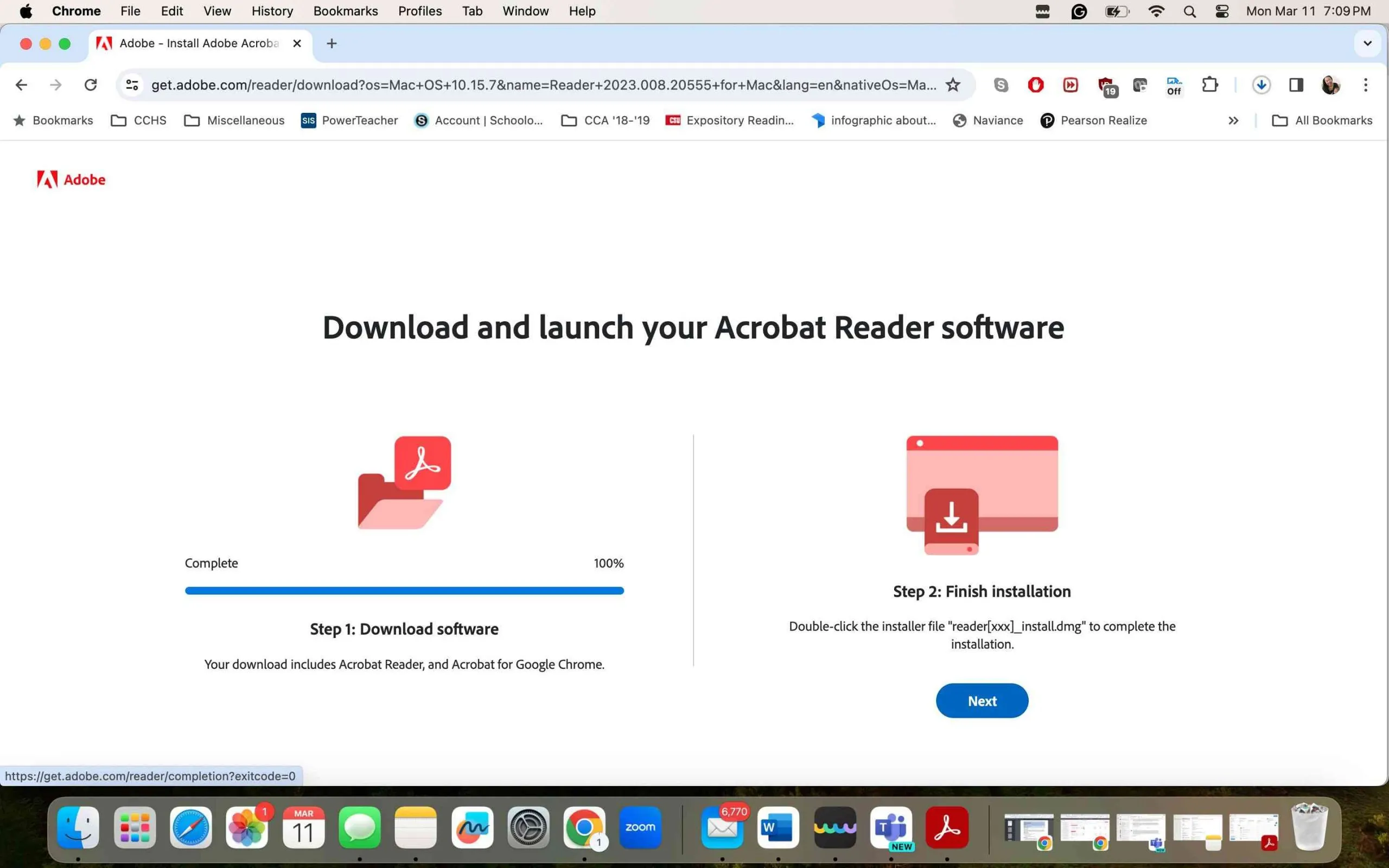
Step 5: Launch Adobe Acrobat.
After installation, open Adobe Acrobat from your Applications folder to see if it's working correctly.

Way 6. Repair the Installation
While Windows offers a "repair installation" function for Adobe Acrobat, this feature isn't available on Mac. Instead, Mac users experiencing issues with Adobe Acrobat should opt to update the application or uninstall and then reinstall it (see Way 4 and 5). For Windows users, the repair installation can be a handy feature to resolve issues, and here's how to use it:
Step 1: Open Adobe Acrobat.
Launch Adobe Acrobat from your desktop, Start menu, or taskbar.
Step 2: Access the Help Menu.
Once Adobe Acrobat is open, navigate to the top menu bar and click on "Help".
Step 3: Start the repair process.
In the "Help" dropdown menu, look for an option that says "Repair Acrobat Installation" or "Repair Installation". Click on it.
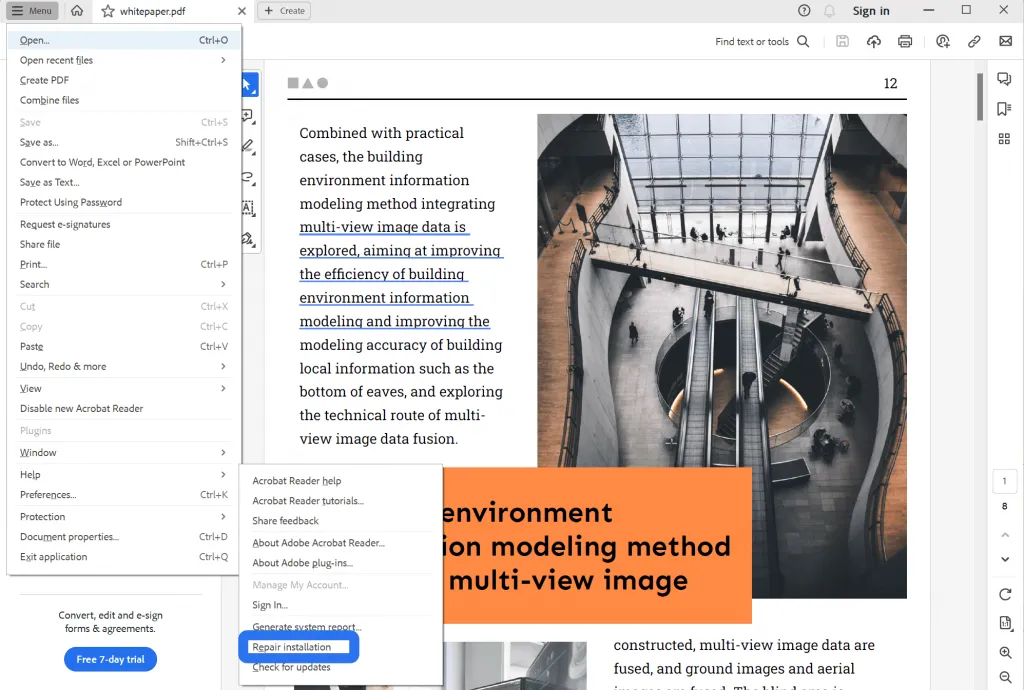
Step 4: Confirm the repair.
A dialog box may appear asking you to confirm that you want to repair the installation. Click "Yes" or "Repair" to proceed.
Step 5: Wait for the repair to complete.
Adobe Acrobat will begin the repair process, which may take a few minutes. You might see a progress bar or status messages.
Step 6: Restart your computer (if prompted).
After the repair process is completed, you may be prompted to restart your computer. Make sure to save any work and close all programs, then restart your computer to complete the repair process.
Way 7. Run Adobe Acrobat in Compatibility Mode
Running Adobe Acrobat in compatibility mode on Windows can help resolve issues related to software incompatibility with your operating system. Here's how you can set Adobe Acrobat to run in compatibility mode on Windows:
Step 1: Locate Adobe Acrobat Shortcut or Executable.
Find the Adobe Acrobat shortcut on your desktop or search for Adobe Acrobat through the Start menu. If you prefer to use the executable, navigate to the Adobe Acrobat installation folder, typically found in "C:\Program Files (x86)\Adobe\Acrobat DC\Acrobat" or "C:\Program Files\Adobe\Acrobat DC\Acrobat" for Adobe Acrobat DC. The executable file is usually named "Acrobat.exe" or similar.
Step 2: Open Properties.
Right-click on the Adobe Acrobat shortcut or the executable file and select "Properties" from the context menu.
Step 3: Switch to the Compatibility Tab.
In the Properties window, go to the "Compatibility" tab.
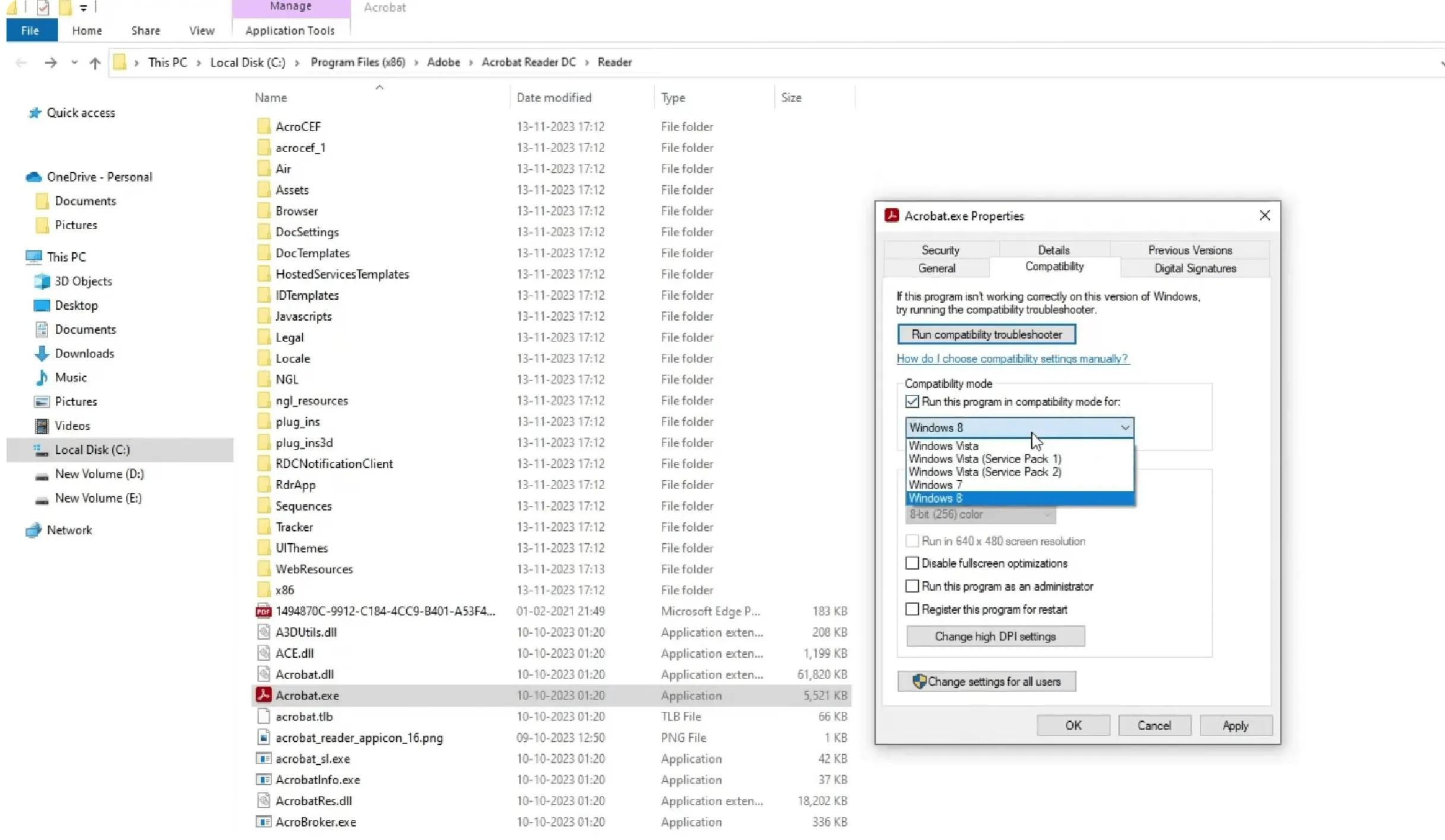
Step 4: Set Compatibility Mode.
Check the box labeled "Run this program in compatibility mode for:". From the dropdown menu below the checkbox, select the version of Windows you want Adobe Acrobat to be compatible with. Choose an older version of Windows if you're experiencing compatibility issues with a newer version.
Step 5: Apply and OK.
Click "Apply" to save your changes, and then click "OK" to close the Properties window.
Step 6: Run Adobe Acrobat.
Open Adobe Acrobat again to see if running it in compatibility mode resolves the issues you were experiencing.
Running applications in a specific compatibility mode isn't natively supported on macOS like it is on Windows. Once again, if you have a Mac, please take a look at Way 4 and 5 and follow those steps.
Way 8. Uncheck Protected Mode
Unchecking Protected Mode in Adobe Acrobat on Windows can help resolve the "not responding" issue because it reduces the security restrictions on the software, allowing it to operate more freely. This can improve compatibility and performance, especially when dealing with complex PDFs or PDFs from untrusted sources, by removing the additional layer of security checks that can cause the program to freeze or slow down. However, this action also increases the risk of security threats, so it should be done with caution and preferably only as a temporary measure. To uncheck Protected Mode in Adobe Acrobat on a Windows system, follow these steps.
Step 1: Open Adobe Acrobat.
Launch Adobe Acrobat. Make sure you're opening the full Adobe Acrobat program and not just the Acrobat Reader if you have both installed.
Step 2: Access Preferences.
Once Adobe Acrobat is open, go to the "Edit" menu at the top of the window and select "Preferences" from the dropdown menu. Alternatively, you can press "Ctrl + K" on your keyboard to open the Preferences dialog box directly.
Step 3: Go to Security (Enhanced).
In the Preferences dialog box, scroll through the list on the left-hand side and click on "Security (Enhanced)".
Step 4: Disable Protected Mode.
In the "Security (Enhanced)" section, you'll find an option labeled "Enable Protected Mode at startup" (the wording may vary slightly depending on your version of Adobe Acrobat). Uncheck this box to disable Protected Mode.
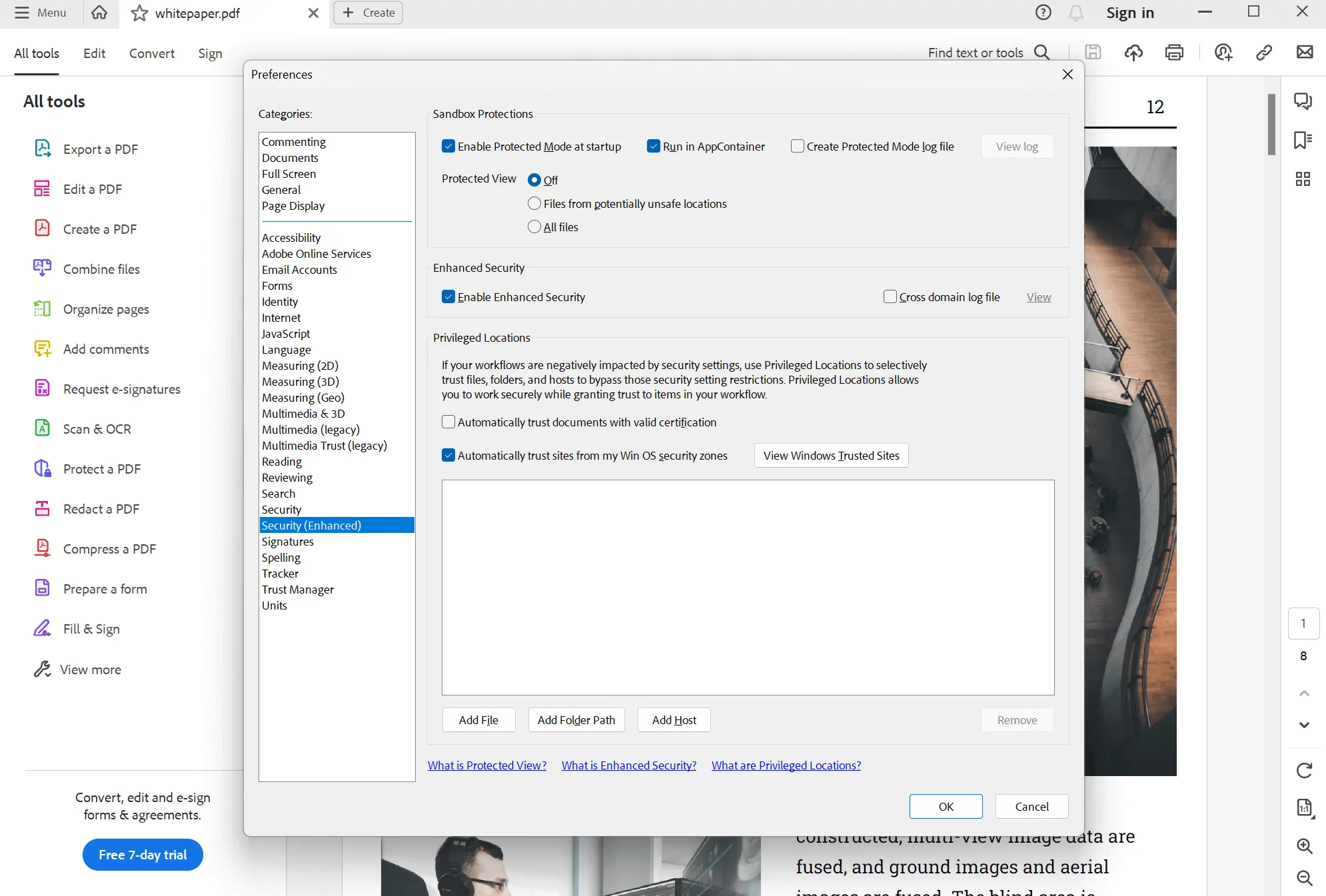
Step 5: Confirm and Restart.
Click "OK" to apply the changes. You may receive a warning about the risks of turning off Protected Mode. Read it carefully and proceed if you accept the risks. You will likely need to restart Adobe Acrobat for the changes to take effect. Close and reopen Adobe Acrobat.
Remember, while turning off Protected Mode can solve some performance or compatibility issues, it reduces the security of your system against potentially harmful PDF files. Always ensure that the PDF files you open are from trusted sources, especially when Protected Mode is disabled. Consider re-enabling Protected Mode once you've completed tasks that require it to be turned off.
Way 9. Install Adobe Reader First
This method (again for Windows only) is about first removing Adobe Acrobat DC/Pro, then putting Adobe Reader on your computer, and finally adding Adobe Acrobat DC/Pro back. This order can fix some compatibility and running issues by making sure the basic Reader is set up before the more complex Acrobat features are added back. Here's a simple breakdown of the steps:
Step 1: Uninstall Adobe Acrobat DC/Pro.
- Go to the Control Panel on your Windows PC.
- Head to Programs > Programs and Features.
- Find and right-click Adobe Acrobat DC or Pro > Uninstall.
- Follow prompts to fully uninstall.
Step 2: Install Adobe Reader.
- Go to Adobe Reader's page on Adobe's website and hit the Download button.
- After downloading, open the installer and follow setup instructions.
- Open Adobe Reader to check it's working fine.
Step 3: Reinstall Adobe Acrobat DC/Pro.
- Visit the Adobe Acrobat page on Adobe's website and choose your Acrobat version (DC or Pro) then click Download.
- Open the downloaded installer and follow the steps to reinstall.
- Open Adobe Acrobat to make sure it runs well.
Installing Adobe Reader first sets up a good foundation for your PDF needs, which helps when you add Adobe Acrobat DC/Pro back, ensuring everything works well together and reducing issues. If you have Windows, try this if previous troubleshooting methods fail to work.
Also Read: Adobe Acrobat Not Opening
Final Words
The "Adobe Acrobat not responding" issue is not something you want to encounter when you're PDFing your way through a tight deadline.
Hopefully, one of the nine troubleshooting hacks in this article resolved the problem, but switching is a good way of guaranteeing that the issue never reappears.
Of the alternatives, UPDF is the best pick, due to its cost-effectiveness, rich feature set, cross-platform compatibility, and AI functionality support.
For most users in need of a swift remedy or anyone in the market for an efficient Adobe Acrobat alternative, UPDF is the top choice.
Ready to unlock a hassle-free PDF experience? Go to click the below button to give UPDF a spin!
Windows • macOS • iOS • Android 100% secure
 UPDF
UPDF
 UPDF for Windows
UPDF for Windows UPDF for Mac
UPDF for Mac UPDF for iPhone/iPad
UPDF for iPhone/iPad UPDF for Android
UPDF for Android UPDF AI Online
UPDF AI Online UPDF Sign
UPDF Sign Edit PDF
Edit PDF Annotate PDF
Annotate PDF Create PDF
Create PDF PDF Form
PDF Form Edit links
Edit links Convert PDF
Convert PDF OCR
OCR PDF to Word
PDF to Word PDF to Image
PDF to Image PDF to Excel
PDF to Excel Organize PDF
Organize PDF Merge PDF
Merge PDF Split PDF
Split PDF Crop PDF
Crop PDF Rotate PDF
Rotate PDF Protect PDF
Protect PDF Sign PDF
Sign PDF Redact PDF
Redact PDF Sanitize PDF
Sanitize PDF Remove Security
Remove Security Read PDF
Read PDF UPDF Cloud
UPDF Cloud Compress PDF
Compress PDF Print PDF
Print PDF Batch Process
Batch Process About UPDF AI
About UPDF AI UPDF AI Solutions
UPDF AI Solutions AI User Guide
AI User Guide FAQ about UPDF AI
FAQ about UPDF AI Summarize PDF
Summarize PDF Translate PDF
Translate PDF Chat with PDF
Chat with PDF Chat with AI
Chat with AI Chat with image
Chat with image PDF to Mind Map
PDF to Mind Map Explain PDF
Explain PDF Scholar Research
Scholar Research Paper Search
Paper Search AI Proofreader
AI Proofreader AI Writer
AI Writer AI Homework Helper
AI Homework Helper AI Quiz Generator
AI Quiz Generator AI Math Solver
AI Math Solver PDF to Word
PDF to Word PDF to Excel
PDF to Excel PDF to PowerPoint
PDF to PowerPoint User Guide
User Guide UPDF Tricks
UPDF Tricks FAQs
FAQs UPDF Reviews
UPDF Reviews Download Center
Download Center Blog
Blog Newsroom
Newsroom Tech Spec
Tech Spec Updates
Updates UPDF vs. Adobe Acrobat
UPDF vs. Adobe Acrobat UPDF vs. Foxit
UPDF vs. Foxit UPDF vs. PDF Expert
UPDF vs. PDF Expert

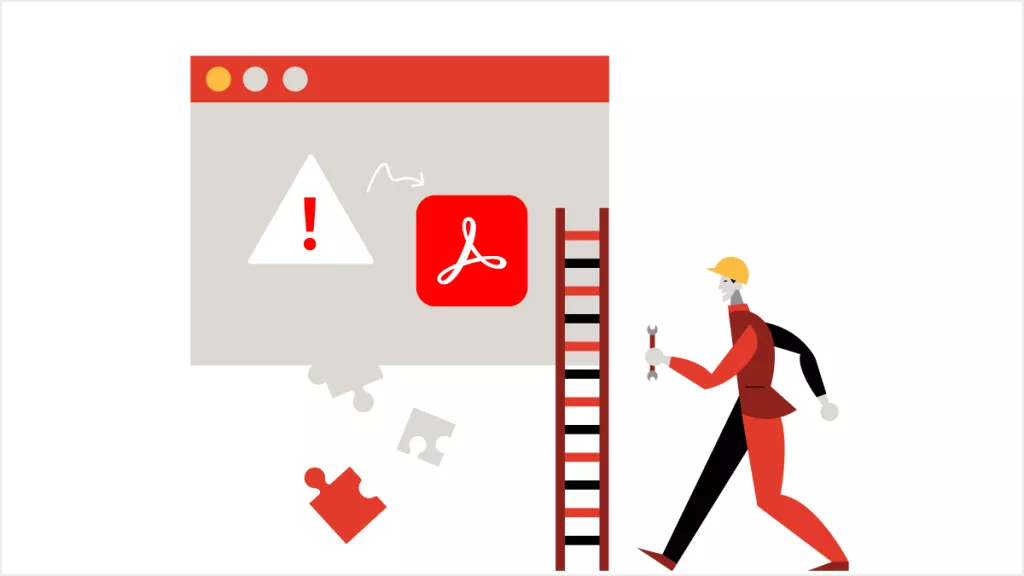






 Enrica Taylor
Enrica Taylor 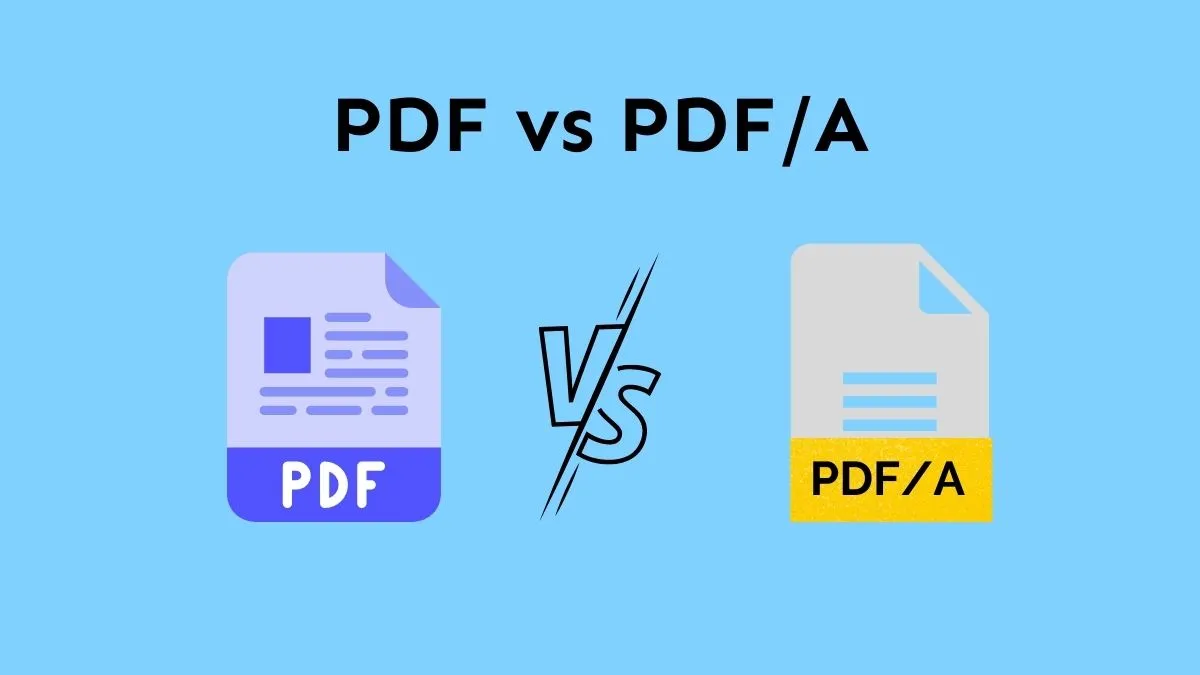

 Delia Meyer
Delia Meyer 
